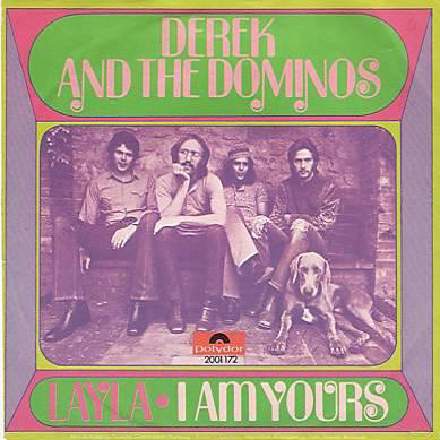
Despite that festering old “knees/please” rhyming cliché (scarcely more endurable than the likes of “girl/world” and “baby/crazy”), there’s plenty to enjoy in this production, not least an extraordinarily compact song structure that manages to squeeze three verses and four choruses into less than two minutes of running time. Underpinning the guitar riff that launched a thousand Vauxhall Astras, there’s also a clever guitar arrangement that’s been designed to work just as well in mono as in stereo. It’s constructed of three elements. Firstly, there’s a simple powerchord part built on the root notes of the chorus’s Dm-Bb-C-Dm chord progression. This effectively doubles the bass line, but where the bass guitar places its notes squarely on the first and third beats of the bar, the powerchords (and indeed the riff) push all but the first chord early by an eighth-note — an essential ingredient in the excitement of the groove, in my view. This part is also resolutely mono, so loses nothing on single-channel playback systems.
The other two guitar parts, which generate the stereo width, use the same rhythm, so at first listen you might mistake them for regular hard-panned double-tracks. However, the left-channel focuses on the middle voice of each chord (the third of each harmony) and the right-hand channel concentrates on the upper voice (the fifth of each harmony), and they only rarely alight on the same note. This means that when they’re summed to mono, they don’t sound ‘smoothed out’ or chorusey in the way that ‘same part in both channels’ double-tracks tend to — even though they do of course lose some subjective level relative to centrally panned sounds (eg. snare and bass), as you’d expect.
The vocal tone is striking too, because it’s actually pretty muffled by modern standards, both rather tubby in the 350Hz region and also rather out-matched at the high end by the drums and percussion. Lyric transmission does suffer a little as a result, but on the plus side, the vocal timbre does significantly bolster the illusion of power from the band instruments, the implicit message being that if the singer’s busting a gut and is still fighting to be heard, then everyone else must be bloody loud! (And speaking of illusion, bear in mind that both lead guitarists used small Fender Champ combos while tracking this record, so don’t assume that you need massive stacks to get a big sound.) Leaving that aside, though, I can’t help thinking that the delayed onset of the lead vocal in chorus three (1:45) sounds suspiciously like it’s been the victim of a tardy punch-out…










